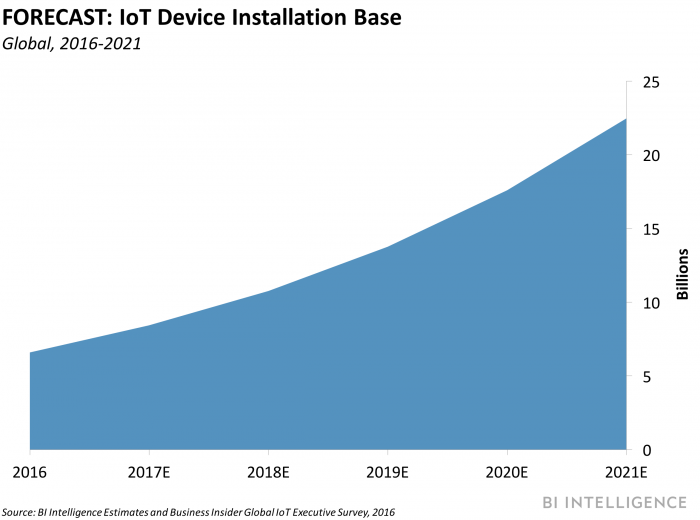IoT networking startup Particle looks to bring Thread to enterprise settings

BI Intelligence
This story was delivered to BI Intelligence IoT Briefing subscribers hours before it appeared on Business Insider. To be the first to know, please click here.
Particle, a seven-year-old IoT startup formerly known as Spark, has unveiled three new small network gateway devices, reports TechCrunch.
The gateways create Particle Mesh networks, based on the Thread networking protocol, to connect nearby small, low-power IoT devices.
The three devices, dubbed Argon, Boron, and Xenon, can then transmit data from devices they connect via Wi-Fi, LTE, and Bluetooth network standards, respectively.
They are currently available for preorder but won't ship until July. Business Insider Intelligence recently spoke to Zach Supalla, the CEO of Particle, about the new products, the company's plans, and the IoT more broadly.
Particle Mesh is one of the first applications of the Thread networking protocol outside of the smart home. Smart thermostat maker Nest, which is owned by Alphabet, developed the Thread protocol, which enables supported devices to connect and communicate with each other, as part of the Thread Alliance back in 2014.
Thread was originally designed to connect small devices spread throughout a smart home with minimal power drain, and has not been used extensively within enterprise IoT projects. Supalla said Particle Mesh is serving as the guinea pig for the protocol's use in enterprise IoT applications. He added that customers preordered 5,000 of the devices in the first five hours they were available online, suggesting companies are interested in exploring the application of the protocol in their own IoT deployments.
The company hopes Particle Mesh can be a viable alternative to low-power wide-area networks (LPWANs) for smaller IoT deployments, Supalla explained. LPWANs like Narrowband-IoT or LoRaWAN are designed to connect IoT devices spread out over several acres or square miles, such as on a pipeline or in a farm field.
However, Supalla said the company is targeting IoT deployments in more confined settings that require low-power connectivity, such as sensors installed in a factory floor or oil and gas refinery. Similarly, he told Business Insider Intelligence that Particle has several customers that want to explore using Particle Mesh within the cabins of commercial semi-trucks, which could provide a low-power connection for sensors monitoring the temperature or condition of goods in transit. Particle Mesh will give businesses an alternative low-power connectivity option for their IoT deployments, which could encourage companies to either expand existing IoT projects or launch new ones.
Through this exclusive study and in-depth research into the field, Business Insider Intelligence (Business Insider's premium research service) details the components that make up the IoT ecosystem. We size the IoT market and use exclusive data to identify key trends in device installations and investment. And we profile the enterprise and consumer IoT segments individually, drilling down into the drivers and characteristics that are shaping each market.
Here are some key takeaways from the report:
We project that there will be more than 55 billion IoT devices by 2025, up from about 9 billion in 2017.
We forecast that there will be nearly $15 trillion in aggregate IoT investment between 2017 and 2025, with survey data showing that companies' plans to invest in IoT solutions are accelerating.
The report highlights the opinions and experiences of IoT decision-makers on topics that include: drivers for adoption; major challenges and pain points; deployment and maturity of IoT implementations; investment in and utilization of devices; the decision-making process; and forward- looking plans.
In full, the report:
Provides a primer on the basics of the IoT ecosystem.
Offers forecasts for the IoT moving forward, and highlights areas of interest in the coming years.
Looks at who is and is not adopting the IoT, and why.
Highlights drivers and challenges facing companies that are implementing IoT solutions.
To get your copy of this invaluable guide to the IoT, choose one of these options:
Subscribe to an ALL-ACCESS Membership with BI Intelligence and gain immediate access to this report AND over 100 other expertly researched deep-dive reports, subscriptions to all of our daily newsletters, and much more. >> START A MEMBERSHIP
Purchase the report and download it immediately from our research store. >> BUY THE REPORT
See Also:

 Yahoo Finance
Yahoo Finance 
